
OR
Opinion
Gaza's Unseen Agony: The Struggle for Survival Beyond the Headlines
Published On: December 28, 2023 09:00 AM NPT By: Loknath Sangroula

In the intricate tapestry of our daily existence, life may be following for most of us a rhythmic dance, alternating between the comforting embrace of home and the dynamic energy of the workplace. The laughter of children may be resonating through school hallways, their eager minds absorbing wisdom. Some of us may be finding solace in the warmth of family dinners, celebrating the arrival of newborns with tears of joy. Others may be discovering themselves adorned in the elegance of suits, jewels shimmering like stars, as they participate in festivities and social functions, their lives moving in harmony with the cadence of time, while others may be embarking on foreign holidays, temporarily seeking to escape the hustle of their busy routines.
Conversely, dissatisfaction with government functioning may be leading some to engage in peaceful demonstrations, advocating for change without resorting to violence. Simultaneously, there may be those harboring resentment against corrupt political leaders for their perceived failure to create employment opportunities or initiate essential development projects in the country. Some may be angry at exorbitant price hikes. In this multifaceted mosaic of existence, our lives may be weaving together moments of joy, reflection, and the pursuit of a better tomorrow.
However, in a secluded corner of our planet, there is a place encircled by imposing concrete walls and fortified with electrified concertina wire to the east, while the vast expanse of the Mediterranean Sea stretches to the west. This enclave is internationally recognized as the Gaza Strip—a diminutive speck on the global map, measuring a mere 41 kilometers from north to south and 10 kilometers from east to west. This is where nearly 2.3 million Palestinians live cheek-by-jowl, making it the most densely populated area of the world. Much like you and me, they too are composed of blood and flesh; they also share the universal desire to witness their children grow before being nipped by the harsh grasp of the Zionist regime, yearning to see their little ones frolicking with joy in their homeyards. There are also families akin to ours, cherishing moments of both happiness and sorrow within their close-knit circles. They shed tears like we do and revel in smiles, revealing the common threads that bind us all. Gaza is far from a desolate landscape; it comprises more than just buildings made of bricks, cement and iron rods. Gaza is teeming with life, much like you and me, pulsating with breath and dreams. Believe me, they are just like us.
For the last eighty days or so, this once vibrant land has been reduced to rubbles, a tragic consequence of the relentless bombing by one of the most technologically and militarily advanced countries of the world, that is, Israel. These very people have fallen victims to the indiscriminate onslaught unleashed by the Zionist regime. Countless parents now bear the unbearable grief of losing their entire progeny, and many children find themselves orphaned. The cries of newborns, once the symbol of love and hope, have been cruelly silenced by the ruthless gunfire. In the heart-wrenching moments of bidding farewell to a lifeless son soaked in blood, a grieving father, tears brimming in his eyes, implores: "Tell Allah of the excesses being committed here, and how our own brothers have betrayed us."
In recent days, Khan Yunis has hogged the headlines, far and wide. Enduring the ceaseless destruction, the once vibrant landscape of Khan Yunis, the second-largest town after Gaza City, covering an area of approximately 42 sq. km., bears the scars of relentless Israeli bombings. The city dates to the Mamluk empire in the fourteenth century. The name "Khan," rooted in history, conjures images of caravanserais or inns – a resting place for weary journeyers and traders along ancient trade routes. Thus, "Khan Yunis" could be interpreted as "the Caravanserai of Yunis," serving as a linking point between Cairo and Damascus as it ensured a space for them. Over time, Khan Yunis evolved into a settled urban center, radiating its own cultural and historical importance. Indeed, the Gaza Strip itself is often considered a part of the Levant or the Fertile Crescent, a term that broadly refers to the eastern Mediterranean region. Today, this repository of history wears a somber visage, with over 20,000 Palestinians being killed, and the number still counting. Gaza Strip is the land that bears the imprint of Gurkha soldiers and Alexander the Great.
The governorate of Khan Yunis, settled by refugees,has long stood as a flourishing agricultural hub, boasting over 4,000 hectares of agricultural land and more than 7,000 farms. The once vibrant landscape has now been plunged into disarray, with everything turned topsy-turvy. The Khan Yunis massacre of 1956 witnessed the Israeli army shoot and kill at least 275 Palestinians, according to UN's conservative estimates. Thus, the city has undergone the experiences of ups and downs, successes and failures as it evolved into an urban center over time.
Cases of diarrhea, including thousands of children, acute respiratory infections, the spread of scabies, and lice have tightened their grip on Gaza. The toll on children is heartbreaking, with stomach flu rampant, marked by symptoms such as abdominal cramps, vomiting, and diarrhea—conditions exacerbated by the harsh reality of sleeping on cold floors. The air is thick with the nauseating stench of decomposing bodies, risking the outbreak of diseases. Gaza has a total of 36 hospitals, with only nine functioning in the southern part. Lack of fuel, staff, and supplies has dealt a death blow to the hospitals, including al-Shifa and Ahli in the north. These hospitals have now completely shut their doors, presenting only a fractured appearance. Only people with nowhere to go have sought shelter in these ghostly, bombed-out hospital premises.Professor Ghassan Abu-Sittah, a multi-award-winning plastic and reconstructive surgeon, shares his experience in Gaza: over time, medical supplies dwindled, and painful procedures were conducted without anesthesia, and patients' wounds were cleaned with store-bought washing liquid and vinegar.
"We are close to humanity's darkest hour," WHO representative Richard Peeperkorn says.
Jehad El-Mashhrawi, a resident of northern Gaza, shared with the BBC a vivid and harrowing account of what he and his family experienced as they traveled south along the 45-km Salah al-Din Road, the main highway of the Gaza Strip spanning the entire length of the territory from the Erez Crossing in the north to the Rafah Crossing in the south. He came across scattered, rotting body parts covered in flies, with birds pecking at the remains, emitting one of the foulest smells he had ever experienced. El-Mashhrawi witnessed a burned-out car with a severed human head inside, describing in graphic detail that the hands of the headless rotting corpse were still holding the steering wheel. Shaken and exhausted, as they progressed toward the Nuseirat camp, they had to navigate over corpses, and some even tripped on the bodies. The tragedy was not exclusive to humans; animals also faced the brunt of the onslaught. There were bodies of dead cats and dogs, donkeys and horses, some reduced to skeletons.
Similarly, the ravages of war have extended their grip on education. According to Jonathan Crick, a spokesperson for Unicef in Jerusalem, a staggering 625,000 schools now stand completely shuttered. This gaping hole in the educational landscape is poised to cast an ominous shadow over the future of these children, compounding the already profound legacy of trauma and loss from this brutal war. Shockingly, UN figures reveal that two-thirds of the enclave's educational infrastructure lie in ruins, accompanied by the devastating toll of over 200 teachers killed and 500 injured by mid-December. Even before the onset of the current war, the grim specter of depression, fear, and grief loomed over four out of every five children in Gaza. As they confront the present devastation, one can only fathom the depths of despair that await in the days ahead.
Endless queues stretch for hours as people patiently wait to fill a jerry can, a scene now all too common across the entire territory. Shockingly, the UN reports that less than five percent of Gaza's essential water requirements are currently being met. Famine is poised to stalk the region, with reports of a person willing to exchange his brand new car for ten kg of wheat flour and ten litres of water. It has become a norm for five to six hundred people to wait in line for a single toilet. The situation is particularly dire for women and girls, who, lacking proper sanitary supplies, resort to taking pills to delay their menstrual periods.The gravity of the situation has reached such an alarming level that journalists in the Gaza Strip, with over 100 already claimed by the war, feel compelled to regularly announce their presence on Twitter, ensuring they are still alive amidst the ongoing shootings and bombings. And, the cycle of sharing their status is becoming an all-too-frequent necessity.
James Elder, a Unicef spokesperson, paints a vivid picture of the scenes in Gaza. He describes a situation where mattresses are tightly packed next to each other, individuals crammed closely together, with 10,000 people in one shelter, 20,000 in another, and 1000 forced to sleep outdoors. Amidst the relentless bombardments, the close-knit cluster of mothers, children, and families is so compact that it's difficult to fathom how almost every blast seems perilously close to hitting someone or something. Roger Waters, the English musician, singer, and songwriter known for his advocacy for the Palestinian cause, describes the situation poignantly: “It is so unspeakable what the Israelis are doing in Gaza that I feel my whole body revolting against it with every breath I take. I spend my life teetering on the verge of tears."
Gaza echoes with explosions and the desperate screams or cries for help—the anguished pleas of those who are trapped beneath the rubble. The air is heavy with the weight of sorrow, not only endured by human beings but also by animals like dogs, cats, and donkeys. Elder shares his harrowing experience in Gaza: "I was woken by birds bashing into my window consistently, with their beaks, seemingly trying to escape the noise. "Heavy rains and cold winds have exacerbated the plight of the people forcibly uprooted from their homes, now huddling in flimsy and flooded tents. Here and there, "human animals" can be seen desperately trying to recover from the rains—using buckets of sand to cover puddles, and hanging up their soggy clothes.
The profound suffering of the Palestinian people has seemingly escaped notice of those who are in the corridors of global power. Liberal democracies, including the United States, the European Union, and Britain, have granted carte blanche to Benjamin Netanyahu, enabling ruthless brutality over Gaza—a staggering historical twist. The horror and tragedy in Gaza over the past eighty days, a repeat of "1948 Nakba," defy over exaggeration. In a poignant display of solidarity with the Palestinians, the lively streets of Bethlehem, usually echoing with laughter and carols, fell into a profound silence this year. The nativity scene, traditionally a symbol of joy, now wears a somber mantle - Nativity under the Rubble. Surrounded by debris and barbed wire, baby Jesus lies in a white sheet, reminiscent of the innocent children who tragically lost their lives in the Gaza war.
The resilience and endurance of the Gazans, despite being betrayed by their Muslim brethren who play to the gallery of big powers, may have reshaped world history, altered global politics irreversibly. I conclude this piece with a few lines from the poem titled "If I Must Die" by Refaat Alareer, a Gazan poet-cum-activist, who was bombed to death in his own residence on December 6, 2023:
If I must die
let it bring hope
let it be a tale
You May Like This
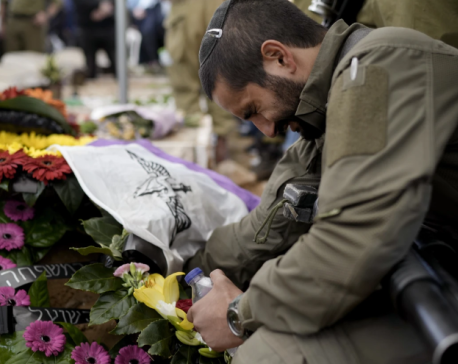
Fighting between Israel and Hamas rages in Gaza’s second-largest city, blocking aid from population
RAFAH, Gaza Strip (AP) — Israeli troops battled Hamas militants Wednesday in the center of the Gaza Strip’s second-largest city,... Read More...
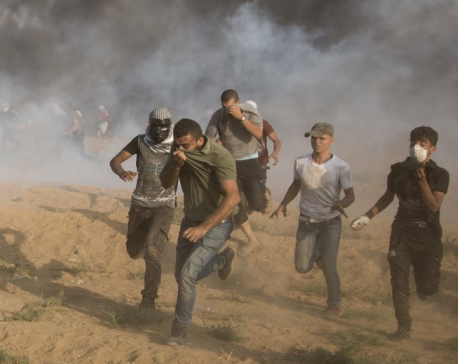
Gaza Endures a Slow-Paced Genocide Unfolding
For the first time in the annals of the Harvard University library, students gathered on its hallowed steps not merely... Read More...
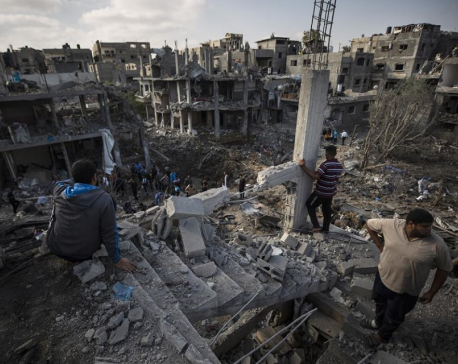
Why is Gaza almost always mired in conflict?
GAZA CITY, May 15: The Gaza Strip was pounded this week by hundreds of Israeli strikes from sea, land and... Read More...




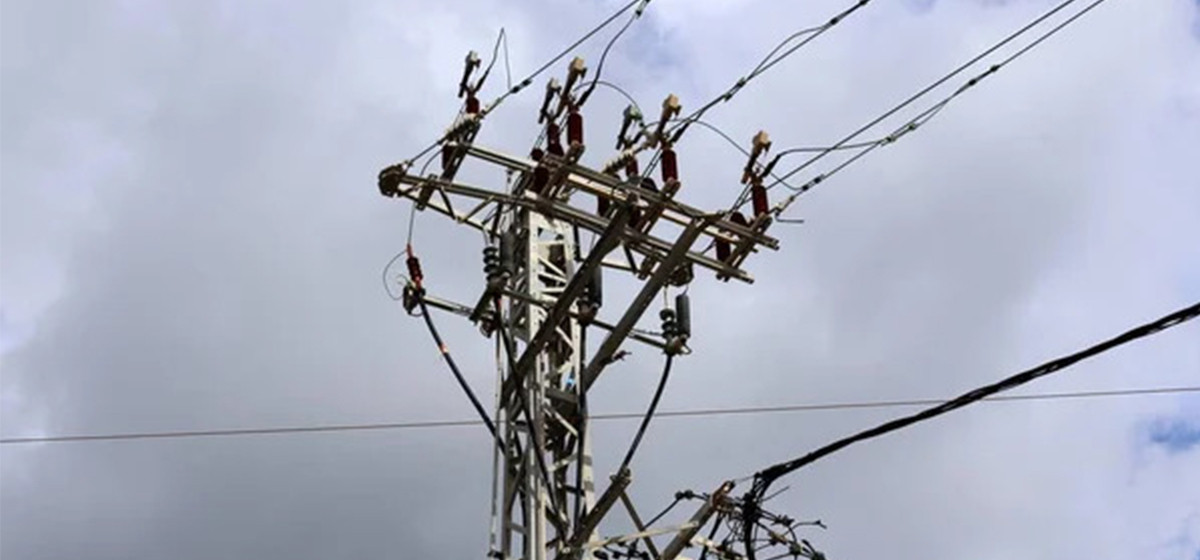

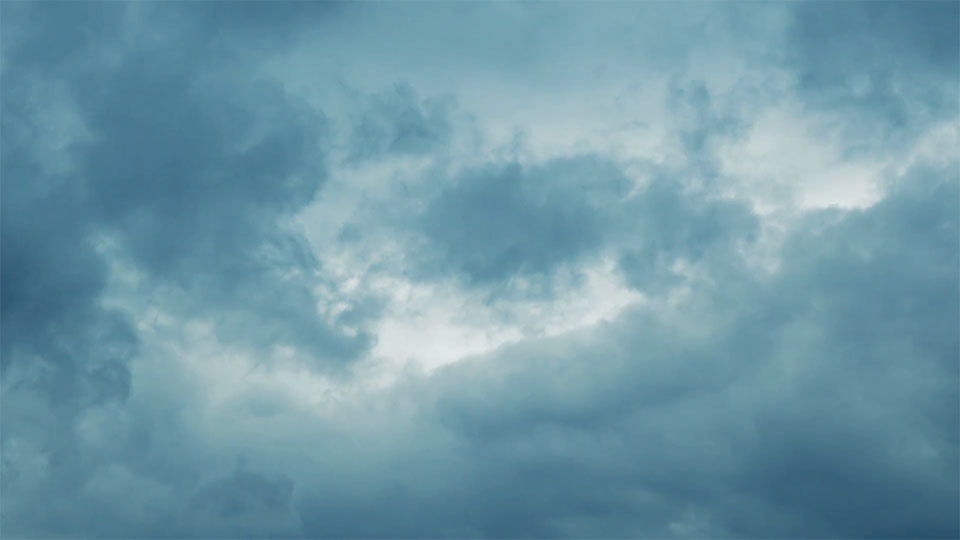

Just In
- Gold prices decreases by Rs 400 per tola
- Ilam-2 by-election: UML candidate Nembang secures over 11,000 votes
- High-voltage power supply causes damage to 60 houses
- Bajhang-1 by election: UML leads again
- Lumbini and Koshi likely to experience stormy conditions
- Bajhang-1 by-election: NC maintains narrow lead over UML
- CIB continues investigation into illegal driving license issuance case
- Hearing on 'murder' case against Agni Sapkota scheduled in SC after 17 years








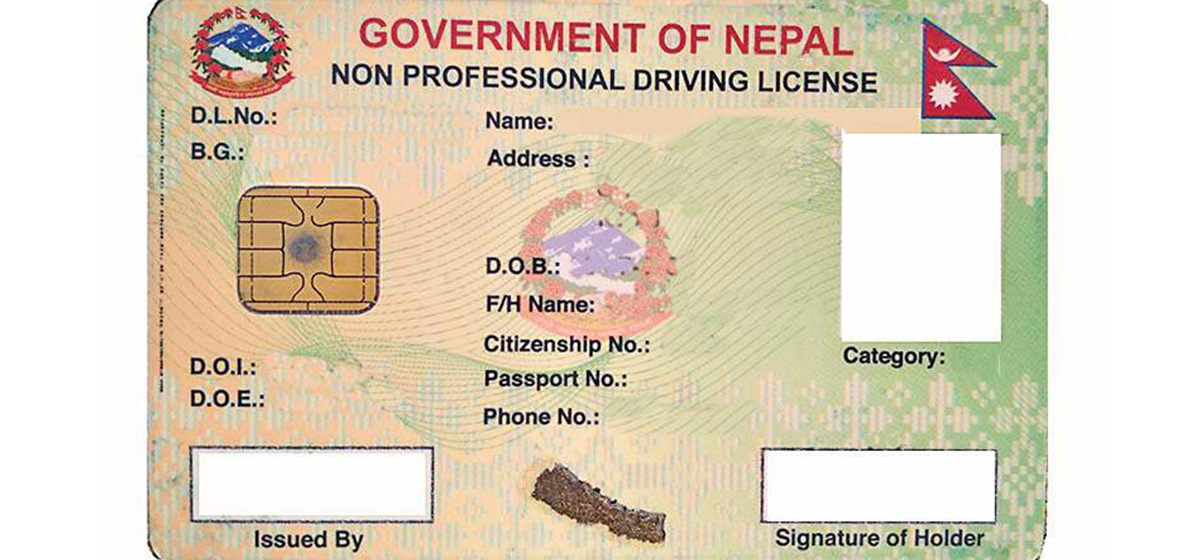
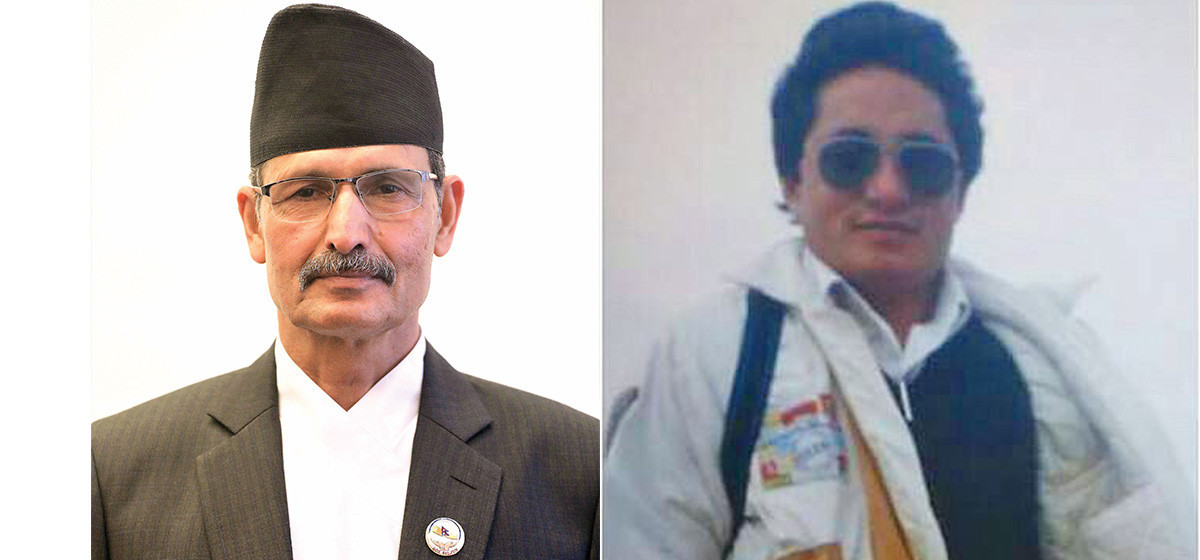
Leave A Comment